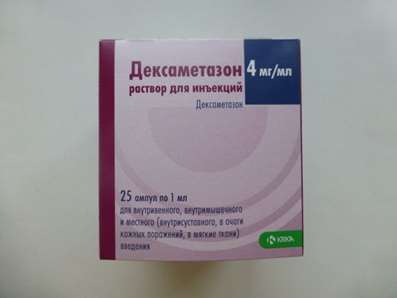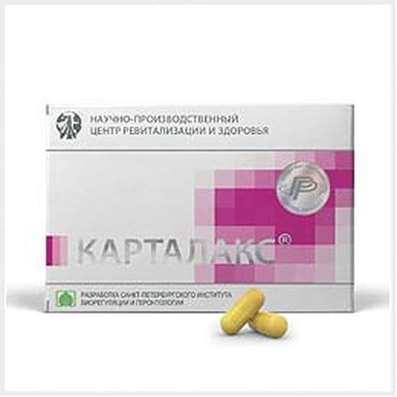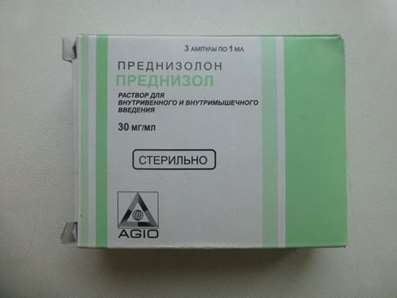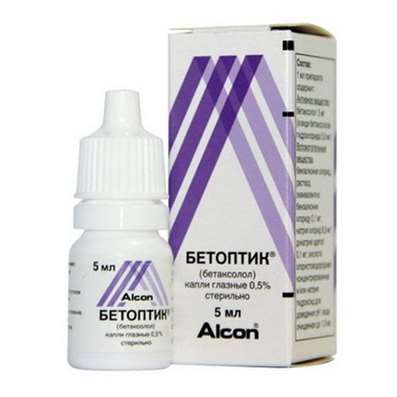Instruction for use: Brimonidine + Tetryzoline (Brimonidininum +Tetryzolinum)
I want this, give me price
Pharmacotherapeutic group:
Alpha-adrenoceptor agonists in combination
Ophthalmic agents in combination
The nosological classification (ICD-10)
H40.0 Suspected glaucoma
Marked rise in intraocular pressure, Hypertension eyes, ocular hypertension, Measurement of intraocular pressure, ophthalmohypertension, Elevated IOP, Elevated intraocular pressure, Elevated intraocular pressure in infectious diseases of the eye, Povyshennore intraocular pressure, Increased ophthalmotonus, Spontaneous blockade angle opposite eye, Narrow chamber angle, Iatrogenic, blockade angle opposite eye
H40.1 Primary open-angle glaucoma
open-angle glaucoma, Open-angle glaucoma, Primary glaucoma, pseudoexfoliation glaucoma, Elevated IOP
Characteristic
Antiglaucoma agents combined (alpha2-agonists + non-selective beta-blocker).
Brimonidine tartrate - a powder of white or from white to slightly yellowish color, is soluble in water. Molecular Weight - 442.24.
Timolol maleate - white, crystalline powder, soluble in water, methanol and ethanol. Molecular weight - 432.5.
Pharmacological effect
antiglaucoma, alpha2-adrenomimeticheskoe topical beta-adrenoceptor blocking local.
pharmacodynamics
The combined drugs, including 2 active substances: brimonidine - adrenoagonists, has a stimulating effect on alpha 2-adrenergic receptors, and timolol - beta-adrenoceptor blocker. Both active agents reduce intraocular pressure by combined action leading to significantly greater hypotensive effect compared to the effect of each of the components individually.
Brimonidine - adrenergic agonist, alpha-receptors, and it has a 1000-fold greater selectivity for alpha2 adrenoceptors compared to alpha 1-adrenoceptors. The selectivity is expressed in the absence of vasoconstriction and mydriasis microvasculature. The antihypertensive effect of brimonidine is provided by reducing the formation of intraocular fluid and increase its outflow by uveoscleral path.
Timolol - nonselective beta-blocker, has no intrinsic sympathomimetic and membrane stabilizing activity. Timolol lowers IOP by decreasing the formation of intraocular fluid. The exact mechanism of action is not selected, it is possible associated with inhibition of the synthesis of cAMP and stimulation caused by endogenous beta-adrenergic receptors.
Pharmacokinetics
Mean Cmax values brimonidine and timolol in blood plasma after application of a combination of brimonidine + timolol were 0.0327 and 0.406 ng / ml, respectively.
brimonidine
Instillation of 0.2% solution as eye drops brimonidine concentration in plasma is very low. Brimonidine slightly metabolized in the tissues of the eye, the connection with blood plasma proteins is approximately 29%. T1 / 2 after topical brimonidine average -. About 3 hours brimonidine main part (about 74% absorbed into the systemic circulation dose) excreted by the kidneys as metabolites for 5 days unchanged drug in the urine is detected. In in vitro studies on liver cells in animals and humans showed that aldehyde oxidase and cytochrome P450 largely incorporated in metabolism. Consequently, systemic excretion is determined primarily by metabolism in the liver brimonidine.
timolol
80% timolol applied as eye drops, enters the systemic circulation by absorption through the vessels of the conjunctiva and the nasal mucous membrane of the lacrimal canal. After installation Cmax eye drops of timolol in the aqueous humor of eyes is achieved in 1-2 hours. T1 / 2 of timolol in plasma is about 7 hours. Timolol insignificantly binds to plasma proteins. Timolol is partially metabolized in the liver; derived active substance and its metabolites kidneys.
Indications
Otkrytoutolnaya glaucoma; ocular hypertension (the lack of effectiveness of local therapy beta-blockers).
Contraindications
Hypersensitivity; increased reactivity of the airways, including asthma and episodes of airflow obstruction, including a history of severe chronic obstructive pulmonary disease; sinus bradycardia, AV block II-III degree, without an implanted artificial cardiac pacemaker, heart failure, cardiogenic shock; concomitant therapy MAO inhibitors, antidepressants - tricyclic and tetracyclic (including mianserin); lactation; age 18 years.
Restrictions apply
Renal / hepatic failure (insufficient use of the drug was studied in this patient group); depression, cerebral or coronary insufficiency, Raynaud's phenomenon, orthostatic hypotension, thromboangiitis obliterans; severe cardiovascular disease unstable flow; diabetes, hypoglycemia (in the absence of therapy); pheochromocytoma (without prior treatment); metabolic acidosis; the simultaneous use of contrast media; in / with the introduction of lidocaine, CCB (verapamil, diltiazem) in connection with the AV conduction oppression risk of bradycardia, heart failure and reducing blood pressure; co-administration or dosage change group of medications agonists (isoprenaline) and blocker (prazosin), and other agents affecting adrenergic transmission, - because of their possible interactions with the active ingredients a combination of timolol or brimonidine + changing their therapeutic potential.
Pregnancy and breast-feeding
Controlled studies on the use of a combination of brimonidine + timolol in pregnant women have been conducted.
brimonidine
No data on the use of brimonidine in pregnant women. In animal studies demonstrated reproductive toxicity at high doses of brimonidine having toxic effects to the mother. The degree of risk to humans has not been established.
timolol
In animal studies established reproductive toxicity at doses of timolol significantly exceeding recommended for use in clinical practice. Epidemiological studies have not revealed congenital fetal malformations, but known risk of delay fetal development when ingested drugs group A beta-blockers. In addition, the characteristic of the group of beta-blockers signs (bradycardia, decreased blood pressure, shortness of breath and respiratory hypoglycaemia) have been observed in newborns when beta-blockers were used mother until delivery.
In this regard, if the combination of brimonidine + timolol assigned in pregnancy up until delivery, requires medical supervision for newborn state during the first days of life.
A combination of timolol + brimonidine may be used during pregnancy only when absolutely necessary.
During the period of lactation
Preclinical studies have shown that brimonidine and timolol are excreted in breast milk. Breastfeeding during treatment should be discontinued.
Timolol was detected in the breast milk of women after oral administration and application as eye drops. It is unknown whether brimonidine excreted in breast milk, although studies have shown that it is excreted in breast milk of animals. Because of the potential for development in infants of severe adverse reactions associated with the use of a combination of brimonidine + timolol nursing women, or the need to stop breast-feeding, or refuse the application combination, taking into account the importance of the drug to the mother.
Side effects
The most common side effects were redness of the conjunctiva of the eye (approximately 15% of patients) and a sense of the eye mucosa burning (approximately 11% of patients). In most cases, the severity of these symptoms were mild, cancellation of therapy required only 3.4 and 0.5% of cases, respectively.
In clinical studies, the combination of brimonidine + timolol reported the following side effects, taking into account the frequency of occurrence: very common (> 1/10); common (> 1/100, <1/10); rare (> 1/1000, <1/100); very rare (<1/10000).
From a sight organ: very often - conjunctival hyperemia eyes, burning sensation; often - severe burning or stabbing pain, allergic conjunctivitis, corneal erosion, superficial keratitis, itchy eyelids, folliculosis conjunctiva, blurred vision, blepharitis, epiphora, mucosal dryness of the eye, discharge from the eyes, pain, eye mucous membrane irritation, foreign body sensation ; infrequently - decreased visual acuity, conjunctival edema, follicular conjunctivitis, allergic blepharitis, conjunctivitis, floating precipitates in the vitreous, asthenopia, photophobia, papillary hypertrophy of the muscles of the eye, sore eyelids, pale conjunctiva, corneal edema, corneal infiltrates, vitreous rupture.
Psychiatric disorders: often - depression.
From the nervous system: often - drowsiness, headache; Infrequent - dizziness, syncope.
From the CCC: often - increased blood pressure; infrequently - congestive heart failure, palpitations.
With the respiratory system: rarely - rhinitis, dry nasal mucosa.
From the digestive system: often - dryness of the oral mucosa; infrequently - dysgeusia.
Skin and subcutaneous tissue: often - swelling of the eyelids, itching eyelids, redness of the eyelid skin; Infrequent - allergic contact dermatitis.
Other disorders: often - asthenic conditions.
Laboratory tests: often - increased activity of liver enzymes.
The following side effects have been reported in addition to the appearance + timolol combination of brimonidine in the market:
From the CCC: the frequency is unknown - fibrillation, bradycardia, tachycardia, decreased blood pressure.
Side effects that have been observed in the application of one of the active ingredients, the possibility of which has not excluded the application of a combination of brimonidine + timolol:
brimonidine
From a sight organ: iridocyclitis, cramps.
Psychiatric disorders: insomnia.
From the respiratory system: inflammatory diseases of the upper respiratory tract, shortness of breath.
From the digestive system: dysgeusia, dyspepsia.
Other: systemic allergic reactions.
timolol
On the part of the organ of vision: decreased corneal sensitivity, diplopia, ptosis, choroidal rupture (following filtration surgery), refractive changes (due to the cancellation of miotic therapy in some cases).
Psychiatric disorders: insomnia, nightmares, decreased libido.
From the nervous system: memory loss, worsening of symptoms of myasthenia gravis, paresthesia, cerebral ischaemia.
On the part of the organ of hearing: tinnitus.
From the CCC: complete transverse heart block, cardiac arrest.
Vascular disorders: cerebrovascular accident, claudication, Raynaud's syndrome, cold extremities.
The respiratory system: bronchospasm (predominantly in patients with broncho-obstructive disease in history), shortness of breath, cough, respiratory failure.
From the digestive system: nausea, diarrhea, dyspepsia.
Skin and subcutaneous tissue: alopecia, psoriasiform rash or exacerbation of psoriasis.
On the part of the musculoskeletal system, connective and bone tissue: systemic lupus erythematosus.
Other: peripheral edema, Peyronie's disease, pain in the chest.
Experience in clinical research
As the clinical trials conducted with a different set of conditions, the frequency of occurrence of adverse reactions observed in these studies may not be directly compared with the frequency of other clinical trials and to predict the occurrence of side effects in clinical practice.
The combination of brimonidine + timolol
In clinical studies, the combination of brimonidine timolol + duration of 12 months, the most frequent reactions associated with the use of combination and identified approximately 5-15% of patients who were allergic conjunctivitis, conjunctival folliculosis, conjunctival hyperemia, itchy eyes, burning sensation and tingling sensations in the eye.
Adverse reactions that have been observed in approximately 1-5% of patients: asthenia, blepharitis, corneal erosion, depression, retention tearing, discharge from the eyes, dry mucous membrane of the eye, eye irritation, pain, eyelid edema, erythema of eyelid, eyelids pruritus, sensation foreign body in the eye, headache, increased blood pressure, dry mouth, drowsiness, superficial punctate keratitis, blurred vision.
Other adverse reactions that have been reported with the individual components are listed below.
Brimonidine tartrate (0.1-0.2%)
Perversion of taste, allergic reactions, Blepharoconjunctivitis, blurred vision, bronchitis, cataracts, pallor of the conjunctiva, conjunctival edema, hemorrhage conjunctiva, conjunctivitis, cough, dizziness, indigestion, shortness of breath, fatigue, flu syndrome, follicular conjunctivitis, gastrointestinal disorders, hypercholesterolemia, hypotension, infection (primarily colds and respiratory tract infection), barley, insomnia, keratitis, crust on the eyelids, the disease eyelids, muscle pain, dryness in the nasal cavity, ocular allergic reactions, pharyngitis, photophobia, rash, rhinitis, sinusitis, superficial punctate keratitis, tearing, upper respiratory tract symptoms, visual field defect, vitreous detachment, vitreous diseases floating precipitates in the vitreous, decrease in visual acuity.
Timolol (use as eye drops)
Body as a Whole: chest pain.
From the CCC: arrhythmia, bradycardia, cardiac arrest, heart failure, cerebral ischemia, cerebral vascular disease, intermittent claudication, cold hands and feet, edema, heart block, palpitation, pulmonary edema, Raynaud's syndrome, syncope and exacerbation of angina pectoris.
From the digestive system: anorexia, diarrhea, nausea.
Immune system: systemic lupus erythematosus.
From the nervous system / psyche: an increase in signs and symptoms of myasthenia gravis, insomnia, nightmares, paresthesia, behavioral changes and mental disorders, including confusion, hallucinations, anxiety, disorientation, nervousness and loss of memory.
Skin: alopecia, psoriasiform rash or exacerbation of psoriasis.
Hypersensitivity: signs and symptoms of systemic allergic reactions, including anaphylaxis, angioedema, urticaria, and localized and generalized rash.
From the respiratory system: bronchospasm (predominantly in patients with pre-existing diseases bronhospasticheskimi) (see "Contraindications".), Shortness of breath, nasal congestion, respiratory failure, upper respiratory tract infection.
From endocrine system: masking symptoms of hypoglycemia in patients with diabetes mellitus (see "Safety precautions.").
From the senses: diplopia, choroidal damage of the eye after filtration surgery, cystoid macular edema, decreased corneal sensitivity, psevdopemfigoid, ptosis, refractive changes, ringing in the ears.
With the genitourinary system: loss of libido, impotence, Peyronie's disease, retroperitoneal fibrosis.
Post-marketing experience
The following reactions have been identified in clinical practice during post-marketing use of brimonidine tartrate and timolol in the form of ophthalmic solutions or as a combination thereof.
Because these reactions reports come voluntarily from a population of uncertain size, it is not possible to reliably estimate their frequency. Reactions, selected because of their seriousness, frequency and possible causal relationship to the use of ophthalmic solutions brimonidine tartrate and timolol or a combination of these factors include the following: erythema century, extending to the cheeks or forehead, hypersensitivity, iritis, keratoconjunctivitis sicca, cramps, nausea, skin reactions (including erythema, rash and vasodilatation), tachycardia.
In young children have been reported apnea, bradycardia, coma, hypothermia, hypotension, lethargy, pallor, respiratory depression and drowsiness.
Oral timolol / oral beta-blockers
The following additional adverse reactions were noted in clinical experience with oral timolol maleate or other oral beta-blockers and may be life
Interaction
Special studies of drug interactions + timolol combination of brimonidine have not been conducted. However, one should consider the opportunity to enhance the effect of drugs which depress the central nervous system (alcohol, barbiturates, opium derivatives, sedatives, general anesthetics), while the use of a combination of brimonidine + timolol.
Timolol can exacerbate compensatory tachycardia and increase the risk of significant decrease in blood pressure when used with general anesthetics. It is necessary to warn the anesthetist on the application of a combination of brimonidine + timolol before the upcoming surgery.
With simultaneous use of timolol and epinephrine may develop mydriasis.
Beta-blockers may increase the hypoglycemic effect of hypoglycemic drugs. They can also mask hypoglycemia.
Hypertensive response to the sudden cancellation of clonidine may increase during treatment with a beta-blocker.
Amplification hypotensive effect (e.g. heart rate reduction) when used in conjunction with quinidine timolol possibly because that slows timolol quinidine metabolism by cytochrome P450 isoenzyme CYP2D6.
Combined use of beta-blockers with drugs for general anesthesia may mask the compensatory tachycardia and increase the risk of significant decrease in blood pressure, so the anesthetist must notify the use of the combination of patient + brimonidine timolol.
Cimetidine, hydralazine, ethanol can increase the concentration of timolol in blood plasma.
It should be used with caution in drugs that affect the metabolism and uptake of circulating catecholamines such as hlopromazin, methylphenidate, reserpine.
Concomitant intake of MAO inhibitors is contraindicated. Patients treated with MAO inhibitors, treatment with a combination of brimonidine + timolol may be imposed 14 days after discontinuation of MAO inhibitor.
Reported to potentiate the effects of combined use of eye drops containing timolol and taken into BPC, guanethidine or beta-blockers, anti-arrhythmic drugs, cardiac glycosides or parasympathomimetics that manifested a marked reduction in blood pressure and / or bradycardic. After the application of brimonidine in very rare cases (<1/10000) reported a decrease in blood pressure. Therefore, caution should be used brimonidine + timolol combination with drugs having systemic hypotensive action.
Overdose
brimonidine
An overdose of the local application: loss of consciousness, decreased blood pressure, bradycardia, hypothermia, cyanosis and apnea.
Overdose Accidental ingestion: Accidental ingestion of brimonidine clinical manifestations include CNS depression, short-term confusion, loss of consciousness or coma, decreased blood pressure, bradycardia, hypothermia and apnea, which resulted in the need for emergency hospitalization in the emergency department, in some cases, tracheal intubation was performed. Reported full recovery of functions in all alleged cases in the period from 6 to 24 am In case of overdose caused by drugs group alpha2-agonists, it was reported the following symptoms:. Decrease in blood pressure, fatigue, vomiting, somnolence, sedation, bradycardia, arrhythmias, miosis, apnea, hypothermia, respiratory depression, convulsions.
timolol
Symptoms of overdose timolol common: bradycardia, decreased blood pressure, bronchospasm, headache, dizziness, cardiac arrest. In clinical studies have shown that timolol does not appear in hemodialysis completely.
Treatment: If overdose is diagnosed, symptomatic therapy.
Routes of administration
Locally.
Precautions
It is unacceptable to touch the bottle tip to any surface to avoid eye infection and the contents of the bottle.
As with all ophthalmic drugs used topically, the combination of brimonidine + timolol may be absorbed systemically.
When allergic reactions treatment combination of brimonidine + timolol should be discontinued.
In patients with severely impaired renal function, hemodialysis, timolol treatment is accompanied by a marked reduction in blood pressure.
Against the background of the drug group of beta-blockers in patients with atopic manifestations and severe anaphylactic reactions to different allergens in history may be reduced or lack of efficacy of the administration of epinephrine to the commonly used doses.
Beta-blockers may also mask the symptoms of hyperthyroidism and worsen Prinzmetal angina, vascular diseases such as peripheral and central, as well as hypotension.
Signs pointing to acute hypoglycemia, particularly tachycardia, palpitations and sweating may be masked during therapy with beta-blockers.
If necessary, discontinuation of therapy a combination of brimonidine + timolol, as well as in the treatment of cardiovascular disease beta-blockers for systemic effects, therapy canceled gradually, to avoid the development of cardiac arrhythmias, myocardial infarction and / or sudden death, the risk of which increases with the abrupt cancellation drugs of this group.
The probability of severe respiratory or cardiac reactions
The combination of brimonidine timolol + contains timolol, which, in spite of the topical application, may be absorbed into the systemic circulation. Therefore, adverse reactions recorded in systemic administration of beta-blockers may occur with topical application. For example severe respiratory and cardiac reactions, including cases of death due to bronchospasm in patients with asthma, and rarely - cases of deaths associated with heart failure have been reported following systemic or ophthalmic use of timolol. In addition, the ophthalmic beta-blockers may impair compensatory tachycardia and increase the risk of hypotension.
Heart failure
Sympathetic stimulation may be essential to support the circulation in patients with reduced myocardial contractility, and its inhibition by beta-adrenoceptor blockade may lead to more severe disease.
In patients without a history of heart failure, myocardial depression prolonged beta-blocker in a certain period of time may in some cases lead to heart failure. At the first signs or symptoms of heart failure, the combination of timolol + brimonidine should be discontinued (see. "Contraindications").
COPD
In patients with COPD (such as chronic bronchitis, emphysema) of mild or moderate severity, bronhospasticheskimi disease or with a history of bronchospastic disease (other than bronchial asthma or a history of bronchial asthma, in which the combination of brimonidine + timolol is contraindicated (sm. "Contraindications") not It should be used beta-blockers, including a combination of brimonidine + timolol.
The potentiation of muscle weakness
It was reported that the beta-adrenergic blockade potentiates muscle weakness, coinciding with certain myasthenic symptoms (eg diplopia, ptosis and generalized weakness). It has been reported that timolol rarely increase muscle weakness in some patients with myasthenia gravis or the myasthenic symptoms.
Before instillation combination brimonidine + timolol contact lenses must be removed, they can be put on again after 15 minutes.
Effects on ability to drive and use machines. The combination of brimonidine + timolol has little effect on the ability to drive and use machines. The treatment combination of brimonidine + timolol possible transient visual disturbances (blurred), development of episodes of weakness and drowsiness, which may be adversely affected if the work is related to the patient potentially hazardous activities. In the event of this symptom should refrain from performing hazardous activities.

 Cart
Cart





